The tragic, trailblazing life of Jackie Coogan, ‘the most famous boy in the world’
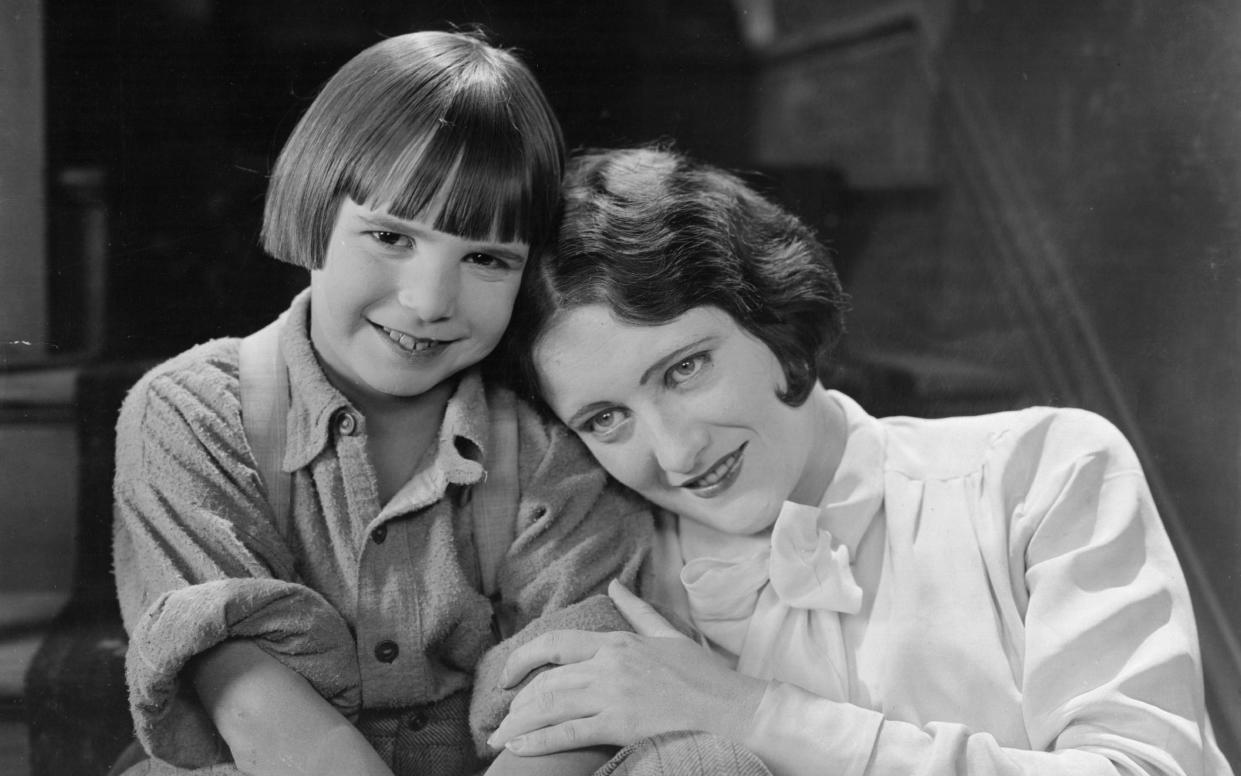
- Oops!Something went wrong.Please try again later.
- Oops!Something went wrong.Please try again later.
- Oops!Something went wrong.Please try again later.
- Oops!Something went wrong.Please try again later.
- Oops!Something went wrong.Please try again later.
Six-year-old Jackie Coogan, who became an instant global star for his performance in Charlie Chaplin’s 1921 movie The Kid, was soon billed by Metro-Goldwyn-Mayer as “the most famous boy in the world”. Four decades later, when he was a household name again for portraying Uncle Fester, the bald ghoulish-looking freak in the television show The Addams Family, he admitted his addiction to life in the spotlight. “Ask anyone,” he said in 1965, “public adoration is the greatest thing in the world”.
But the venerating public knew little of his extraordinary, crazy private life. A few quick examples: Coogan survived the horrific car crash that killed his father and three passengers because he was cushioned and “saved” by bags of dead doves. He created history by inspiring legislation to protect child actor revenue, after an estimated £70 million (in today’s money) of his own earnings was stolen and squandered by his parents and stepfather.
The drama in his life was ceaseless. He was a World War Two glider pilot hero who survived a deadly attack by Japanese soldiers; he had four volatile marriages, including to Golden Age starlet Betty Grable; his life was blighted by drink and drugs dependency that landed him in trouble with the police. Finally, after hundreds of film and television roles, including a penultimate one for acclaimed director Francis Ford Coppola in The Escapist, he died of a heart attack on March 1 1984, aged 69.
John Leslie Coogan, born on October 26 1914, was the son of vaudeville performers John and Lillian. He was just four when, on stage with his parents at the Orpheum Theatre in their home city of Los Angeles, he was talent-spotted by Chaplin, who hired him to play the abandoned angelic sad-eyed waif taken in by a tramp to be his rascal sidekick.

The Kid is one of the masterpieces of silent cinema and Chaplin said of his young co-star that “just to be in his presence is to feel inspired.” Coogan captivated cinema audiences around the world and in the following three years he appeared in 11 movies, including Peck’s Bad Boy, Long Live the King and Oliver Twist, where he gave a scene-stealing performance alongside Lon Chaney as Fagin.
Before he was 10, Coogan’s life had become a surreal celebrity circus. He travelled in a private railroad car and was sought out by author Arthur Conan Doyle. “Other boys went to see Babe Ruth. Babe Ruth came to see me,” Coogan quipped about the baseball legend. Asked in 1972 whether he grew up as a normal boy, he replied: “Normal boy? How would I know what a normal boy would do? When I was seven, we bought a big house and put in one of the earliest swimming pools in Southern California. Being who I was, I had the best swimming instructor – Duke Kahanamoku – the year after he won the Olympics.”
In 1924, Coogan stayed in London as part of a five-week European fundraising tour on behalf of an orphans charity. After returning from a visit to the London Zoo, he was mobbed outside The Savoy (where he was staying in the Royal Suite) and police had to rescue him from fans. In Italy, he had a private audience with Pope Pius XI and met Prime Minister Benito Mussolini, who gave him an autographed photograph inscribed “to the Little Great One”.
Coogan’s earnings poured in for his parents. By 1924, he was America’s top box office draw, ahead of Douglas Fairbanks and Rudolph Valentino. “I had the flu in New York, and it pushed the President of the United States off the front pages,” he recalled. His film earnings were estimated at £40 million – his contract guaranteed a share of profits from films – and he became, in essence, the first celebrity film star franchise.
“We pioneered the commercial tie-up market,” Coogan told the Associated Press in 1964, “at one time my name was on 50 or 60 different items”. The money from branded dolls, pencil cases, soaps, lunch boxes and a lavish contract from retailers Peck & Peck to produce a Jackie Coogan line of clothes, brought in an estimated £30 million.
This enchanted childhood came to a shattering halt in the 1930s, though. His film career was waning in the era of the talkies (after disappointing performances in Tom Sawyer and Huckleberry Finn) and he dropped out of Santa Clara University because of poor grades. In 1933, he was caught up in a vigilante controversy when it was claimed 19-year-old Coogan helped hold the ropes in a revenge mob lynching in San Jose of Thomas Thurmond and Jack Holmes, two criminals who kidnapped and murdered Coogan’s 22-year-old university friend Brooke Hart.
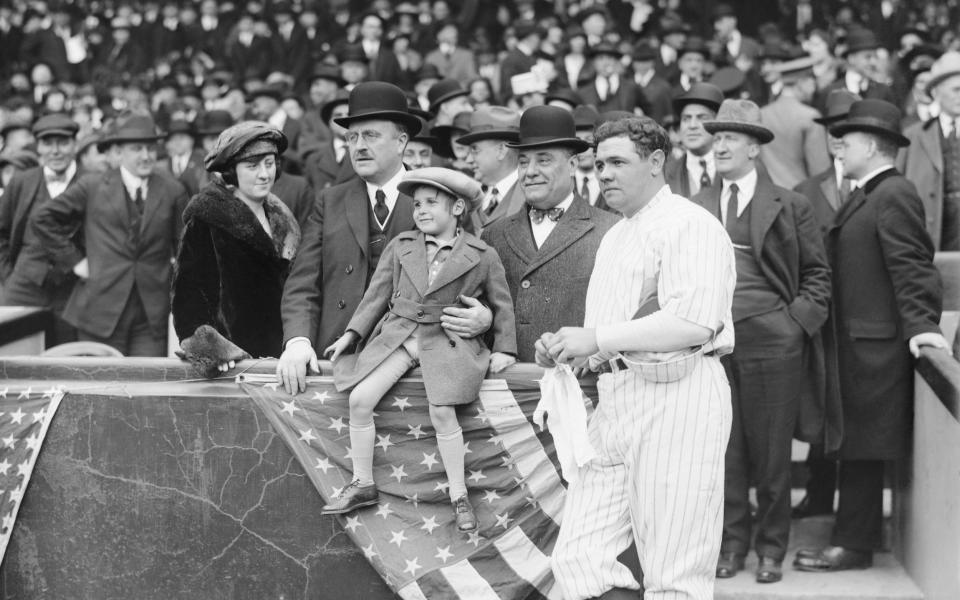
His life began to unravel completely in May 1935, five months before his 21st birthday. After a day of dove hunting in Mexico (in which 350 birds were slaughtered with eight shotguns), an automobile catastrophe occurred. Coogan’s father was driving at 75 miles an hour when he swerved at a bend outside San Diego and crashed down a canyon. The vehicle rolled over seven times before it came to a stop at the bottom of a creek. Coogan’s father died along with fellow passengers Junior Durkin (a 19-year-old friend who played Huck Finn to Coogan’s Tom Sawyer), rancher Charlie Jones and Hollywood scriptwriter Robert Homer.
Coogan only survived because he was cushioned by the bags of dead doves. “The doves were like feather pillows. That’s what saved me,” he said. Coogan suffered cuts and bruises and two damaged ribs. Jones, who was sitting beside Coogan, was hurled out of the car with such force during the first somersault that he was decapitated by a rock.
After turning 21, and plagued by financial worries, Coogan sued for his missing earnings (he had only ever received a weekly allowance of $6.25, because under California law, at the time, the earnings of a minor belonged solely to the parent). His mother and her lawyer husband Arthur Bernstein had burnt through millions on Rolls Royces, property ventures, fur coats and jewellery, including a diamond-studded pocket watch for Bernstein that cost £50,000. When the case finally reached trial in April 1938, LA Superior Judge Emmet Wilson heard evidence that Coogan’s mother had called him a “bad boy” and shouted at her son: “It’s all mine and Arthur’s and so far as we are concerned you will never get a cent.”
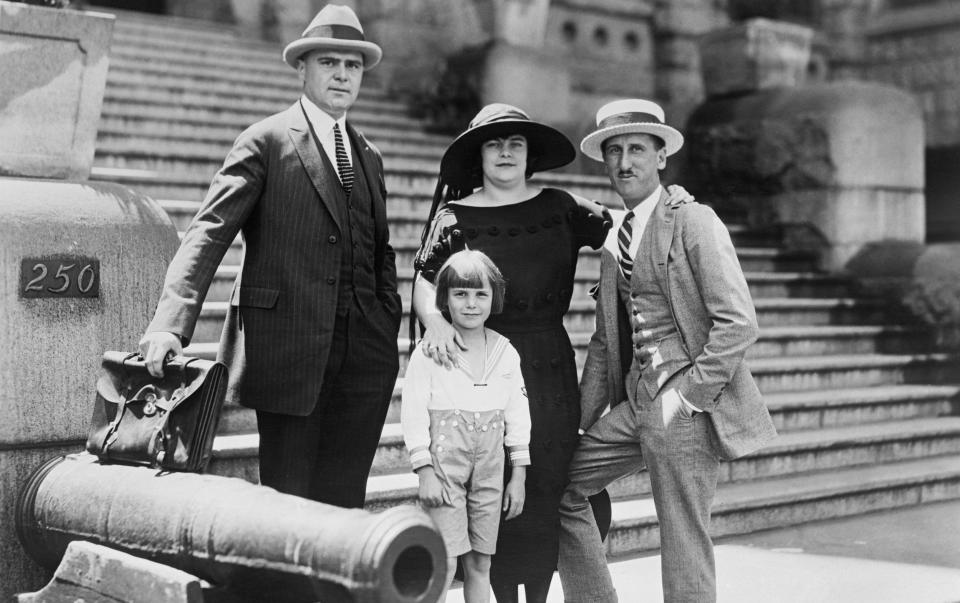
Bernstein had friends in high places, including Louis B. Mayer, then head of MGM and the highest-paid man in America. He rang Coogan and warned him to drop “this silly suit”, adding that “no red-blooded American boy ever sues his own mother.” During the trial years Coogan had been struggling for money (Chaplin gave him a gift of $10,000 to help him get by) and his career had stalled. Looking back, in 1972, Coogan said: “It was the lowest point of my life, because my stepfather was related to many people, and I was blackballed by the studios.”
His advice to future child stars was “stay away from mothers”, although he did later reconcile with Lillian. Coogan was awarded a small proportion of his earnings back after the lawsuit but his pioneering suit led directly, in May 1939, to the passing of The California Child Actor’s Bill (known as the Coogan Law) which ensured that 15 per cent of child actors’ earnings had to be safeguarded in a trust fund.
Coogan married starlet Betty Grable on November 20 1937 and their temperamental relationship had problems from the start. According to Coogan’s biographer and friend Diana Serry Cary, Grable came home shortly after the honeymoon to find that Coogan had sold their wedding presents for “ready cash”. He later sold all their furniture, bar the fridge. When confronted about his behaviour, Coogan shrugged and replied: “A guy has to eat, hasn’t he?”
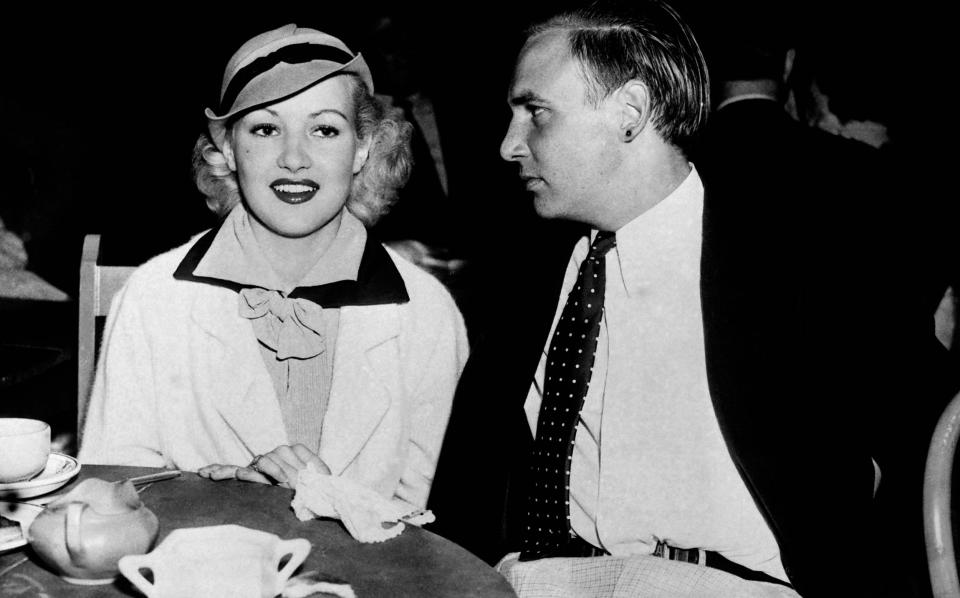
In the same period, Coogan and Grable gave an interview to Pathé News claiming they had been robbed at gunpoint, with the carjacker ordering the actress to “hand me your ring or I will blow your brains out”. The incident was unusual enough for Coogan to be asked whether it was actually a publicity stunt. “There is no truth in that whatsoever,” he replied. “We don’t have to do things like that to get publicity. I wish it was a publicity stunt because we would like to get the rings back.” The pair acted together a few times, including in a film originally entitled Campus Dormitory but renamed Million Dollar Legs in a nod to Grabler’s appeal and allowing Twentieth Century-Fox to insure the actress’s legs for the same amount.
Grable became quickly disillusioned with married life and complained to musician friend Artie Shaw about Coogan’s “boorish behaviour”. Some of it was weird and creepy rather than simply boorish. One evening, for example, as a “drunken joke” (according to biographer Cary) “he urinated on his sleeping wife”. It was seemingly the final straw. Within weeks, she called Shaw to tell him she was divorcing Coogan and would be the jazz star’s lover. Shaw later ungraciously commented about Grable, who died at 56 from lung cancer, that “Betty had the most gorgeous body I have ever seen, though not much going on upstairs.”
Coogan wed again in 1941, to actress Flower Parry, and that marriage also lasted only two years. When she sued for divorce, the 21-year-old said Coogan was a heavy drinker and had frequent affairs, telling Judge Frank M. Smith, “he just didn’t seem to care about me or our baby John Anthony and he went out with many girls.” Parry said that when they were living in Monterey he was frequently out boozing with the pals he had made while working as a glider flight instructor and stationed in Kentucky.
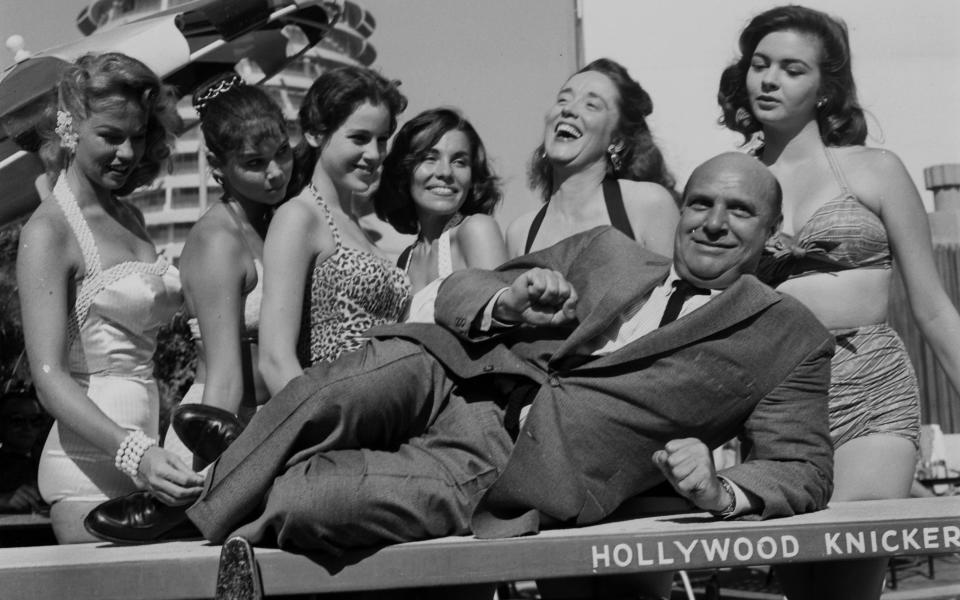
As it turned out, Coogan, who had a pilot’s licence, was better as a military man than a husband. In March 1944, Flight Officer John L. Coogan was at the controls of the lead glider when Allied Forces, under the renowned Major General Orde Wingate, were dropped in the dark of night 150 miles behind Japanese lines in northern Burma. Carrying a plane full of British commandos called the Chindits, who were specialists in close combat and jungle warfare, Coogan landed the glider safely in treacherous conditions. For the next four days, he worked in monsoon storms to help build a safer landing strip.
His most traumatic wartime memory, though, was when he was piloting another glider that crashed in enemy territory. Coogan’s friend John Astin, who starred as Gomez Addams, said Coogan talked to him about his horrifying experiences. “The Japanese soldiers came in and bayoneted everybody in the plane. And Jackie was the only one that they missed,” said Astin. “He lay alone at the bottom of this pile of dead and dying men, and eventually he got out and escaped. But he was plagued with nightmares much of his life.” Coogan was honourably discharged in 1944 and awarded the Air Medal for meritorious service. “Of all the actors, I think Jackie was the most genuine and unsung hero in World War Two,” said Oscar-nominated actor Jackie Cooper.
On his postwar return to Hollywood, Coogan remarked bitterly that “I got big hellos and backslaps, but no jobs.” The lack of money did little to dampen his romantic pursuits, though. On Christmas Eve 1946 he obtained a marriage licence to wed blues singer Ann McCormack (who was talented enough to tour as a support act for Frank Sinatra and Johnny Mathis) and the pair wed on Boxing Day. Their daughter, Joann Dolliver Coogan, was born two years later in Los Angeles.
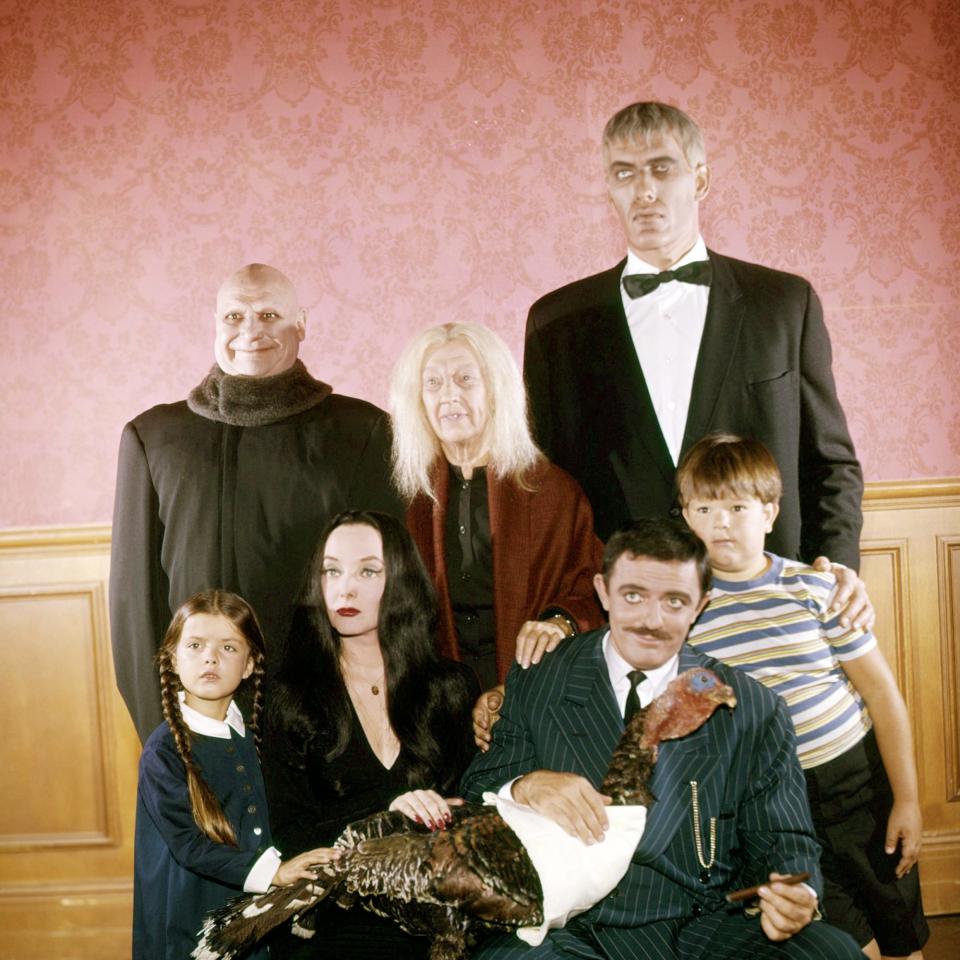
This third marriage also ended in divorce (in 1951), when the singer admitted to Reuters that their relationship had been doomed for months. She cited his “cruelty” in the divorce papers, and told the court he criticised her cooking, called her “stupid” and “twisted her arm repeatedly”. Actor Dick Winslow said Coogan was so soured by the marriage that he had become “a confirmed woman-hater”.
It was around this time that Coogan, disheartened by his lack of work, his expanding waistline and his baldness, quit show business to sell kitchen gadgets. “I just ran out of gas,” he later lamented. However, he was lured back by the offer of working in the new medium of television, landing the part of Agent Stoney Crockett in the long-running western series Cowboy G-Men, set in the 1870s. In the 1950s, he also got to work with stars such as Charlton Heston, Spencer Tracy and Red Skelton.
In October 1952, while filming the first episodes of Cowboy G-Men, Coogan married for the final time, to showgirl Dorothy ‘Dody’ Lamphere, a close friend of McCormack. They stayed together for the rest of his life, although, according to Cary, Lamphere once quietly filed for divorce and lived apart from Coogan before they reconciled and renewed their vows.
Coogan’s fourth wife endured a lot of his most problematic drinking and drug-taking. In 1959, Coogan crashed his sports car into two parked vehicles on San Vicente Boulevard and was treated in hospital for multiple abrasions to his face. A police breath test found that his blood-alcohol level was well above the legal limit in California and Coogan was forced to pay a hefty fine. On another occasion, he was arrested for possession of marijuana at his home in Malibu, California – a female sex worker at the house was dismissed without charge – and the actor, bailed for $2,625, avoided jail time only because his trial was dropped after he contracted a severe case of mumps.
What rescued his reputation as an actor was landing a role as Uncle Fester in The Addams Family, despite being rejected after his first audition. “He went home, got in a costume, shaved his whole head, did his makeup the way he pictured it would be – because he was an Addams fan from the cartoons – and went in with the high-pitched voice, the makeup, and costume all on his own,” his daughter Leslie told Stephen Cox, author of the 1991 book The Addams Chronicles: Everything You Ever Wanted to Know About the Addams Family. “The producers sent everyone else home. It was a bit humiliating to him that he had to prove himself, but he obviously wanted the role.”
Coogan made Fester his own and the character remains one of the great bizarre figures of popular entertainment, so much so that the hit Netflix show Wednesday (starring Jenna Ortega as Wednesday Addams) is spawning a 2024 spinoff series for the streaming giant, starring Fred Armisen as Uncle Fester.

When Coogan took the role as the hairless, barrel-shaped brother of Gomez – relishing the fun of playing a character who would stuff a lightbulb in his mouth and make it glow – he was about to turn 50 and the tousled blond hair and angelic smile of The Kid had long vanished. He wore a toupee off screen and the screenwriters used his angst about baldness for the 1965 episode Uncle Fester’s Toupee, in which his character buys a hairpiece from a door-to-door salesman, in the hope of impressing a woman called Madelyn.
The Addams Family started on September 18 1964 and Coogan ended up delighting in playing Fester. He sometimes left the studio without removing his makeup and would cycle home in character, giving Californians the bizarre sight of seeing Uncle Fester pedalling along their streets. “Fester never talked in the Charles Addams cartoons, so I raised my voice an octave and gave him a beetling look,” Coogan told the news agency UPI in 1965. “Fester has a lot going for him, but his only trouble is that he’s one of the great losers of our time. Still, he’s my kind of people. He’s an irascible old goat.”
Coogan was crushed when ABC axed The Addams Family in 1966 – after 64 episodes – declaring “It was such fun, I don’t know why it was cancelled.” Although he was overjoyed to reprise the role for a one-off special in 1977 (‘Halloween with the New Addams Family’), his career in that decade was a desultory mix of weak cinema roles and minor television appearances in popular shows such as Ironside, The Brady Bunch and Marcus Welby, MD. After the thrill of working for Coppola, his swansong was as a ranger in a low-budget axe-murderer horror called The Prey.
Coogan’s health deteriorated badly in his late 60s. He suffered numerous small strokes and needed regular dialysis after kidney failure. Leslie, one of four children he left behind, said that her father “had a gargantuan appetite for everything” and that his love of “rich food” added to his health problems. Perhaps a man who had seen so much violent death didn’t care much at that stage. There was one final tragic motoring postscript that Coogan didn’t live to see: in 1990, Coogan’s son Christopher died from injuries sustained in a motorcycle accident in Palm Springs. He was just 22.
Coogan certainly deserves to be remembered for being the first major child star in American movie history – and celebrated for the hilarity he brought to the role of Fester. Astin paid tribute at Coogan’s funeral to a colleague who “had a great lust for life and who was as much fun to work with as anyone in the business.” In 1972, when Coogan was reunited with 82-year-old Chaplin, who was back in America to accept an honorary Oscar, the comedian whispered to Dodie Coogan, “Remember, your husband’s a genius.”
Despite all the acclaim and fame, however, it’s hard not to be struck by the poignancy of a candid memory that Coogan’s daughter Leslie once let slip. “One day my father came home from shooting an episode of The Addams Family, crying – and sober – and said, ‘I used to be the most beautiful child in the world and now I’m a hideous monster,’” she recalled. “It hit him. It really had to do with his lost childhood.”

